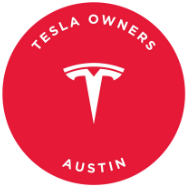One of the key factors that sets Rivian apart from other automakers is its vertical integration. The company does most of its hardware and software work in-house, allowing for a more streamlined and efficient process. This approach has enabled Rivian to create the second-generation R1T and R1S models, which are not only more advanced but also simpler under the hood.
During a tour of Rivian’s engineering headquarters in Palo Alto, California, Kyle Conner of the YouTube channel Out Of Spec Reviews got a firsthand look at the company’s innovative approach to vehicle design. The most striking change in the new models is the significant reduction in wiring and the number of onboard computers. By removing 1.6 miles of internal wiring harnesses and cutting the number of electronic control units from 17 to 7, Rivian has made its vehicles lighter, more cost-effective, and easier to repair.
Electric vehicles have traditionally been more expensive and heavier than their gas-powered counterparts due to the high-voltage batteries. In a bid to reduce costs and weight, automakers like Tesla and Rivian are focusing on simplifying their designs and making them more efficient. Rivian’s shift to a zonal architecture, with powerful processors located in different zones of the vehicle communicating over a high-speed network, has drastically reduced the amount of wiring required.
By streamlining the internal components of its vehicles, Rivian has not only made them easier to repair but also more cost-effective to produce. The reduction in wiring and onboard computers has shaved off 44 pounds of weight from the vehicles, freeing up valuable space and potentially saving the company thousands of dollars per vehicle. This move towards simplicity and efficiency is a testament to Rivian’s commitment to innovation and sustainability in the electric vehicle industry.
With the success of the second-generation R1T and R1S models, Rivian is poised to continue pushing the boundaries of electric vehicle technology. The future models from the company could be even more simplified and efficient, setting a new standard for the industry as a whole. As Rivian continues to lead the way in electric vehicle innovation, the automotive world eagerly awaits what the company has in store next.
One of the key advantages of Rivian’s approach to vehicle architecture is the reduction in complexity when it comes to diagnosing and fixing issues. Traditional automakers often face challenges when a vehicle component breaks down, as the entire wiring harness may need to be removed and replaced. This process can be time-consuming and costly.
However, with Rivian’s zonal architecture, the diagnosis of a faulty component is far more localized. Instead of having to remove the entire wiring harness, technicians can pinpoint the exact location of the issue and address it directly. This not only saves time but also reduces the overall cost of repairs.
Rivian’s ability to achieve this level of efficiency in diagnosis and repair can be attributed to several factors. Firstly, the company’s location in Silicon Valley allows for easy access to cutting-edge technology and expertise. Secondly, Rivian prioritizes vertical integration, meaning that much of the design and manufacturing process is done in-house. This tight control over the production process ensures a high level of quality and precision.
Furthermore, Rivian fosters close collaboration between its hardware and software teams, allowing for seamless communication and problem-solving. This collaborative approach means that changes can be implemented quickly and efficiently, without the bureaucratic hurdles often found in traditional automakers.
Additionally, Rivian’s use of test rigs that simulate real-world failures ensures that the system is robust and reliable before it is integrated into an actual vehicle. This proactive testing approach helps to identify and address potential issues early in the development process, further enhancing the overall quality of the product.
Overall, Rivian’s innovative approach to vehicle architecture not only results in a more streamlined and efficient production process but also leads to a more reliable and easier-to-maintain end product. By reducing the complexity of diagnosing and repairing issues, Rivian is setting a new standard for the automotive industry and redefining the way vehicles are designed and built.
Volkswagen’s decision to invest over $5 billion in a joint venture with Rivian is a strategic move that highlights the importance of Rivian’s expertise in software and electrical architecture. While many automakers rely on third-party integrators for these crucial components, Rivian takes a different approach by developing its own technology in-house.
According to Rivian’s Chief Engineer, Rajagopalan, being a technology leader requires more than just assembling off-the-shelf components. It involves creating value and differentiation through proprietary technology. By designing and developing their own software and electrical architecture, Rivian can maintain a competitive edge and ensure that their vehicles stand out in the market.
One of Rivian’s key innovations is their zonal architecture, which allows for more efficient and streamlined vehicle systems. This technology not only reduces the complexity of wiring in Rivian’s vehicles but also improves overall performance and reliability. In fact, Rivian has been able to cut miles of wiring from their R1S and R1T models, demonstrating a significant advancement in vehicle design and engineering.
Furthermore, Rivian is constantly pushing the boundaries of electric vehicle technology. They are implementing key charging features in their R1S and R1T models, such as manual battery preconditioning, to enhance the charging experience for customers. Additionally, Rivian’s CEO, R.J. Scaringe, continues to provide promising updates on the development of the R2 program, signaling a bright future for the company and its innovative electric vehicles.
Overall, Volkswagen’s investment in Rivian underscores the importance of investing in cutting-edge technology and innovation. By partnering with Rivian, Volkswagen is not only gaining access to advanced software and electrical architecture but also positioning themselves as a leader in the electric vehicle market. As Rivian continues to push the boundaries of what is possible in vehicle technology, the future looks bright for both companies and the industry as a whole.

